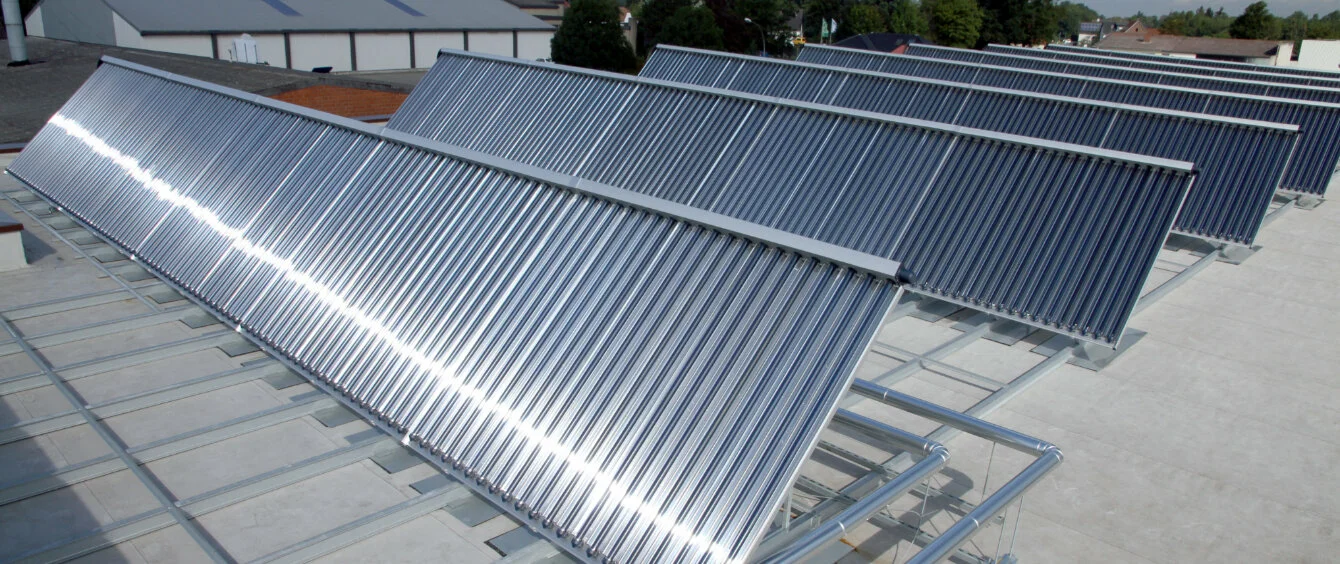In the first three installments of our Solar Heat series, we provided you with detailed reports on the technologies used to generate electricity from the rays of the sun. In Part 4, we present how the warmth of the sun can be used directly, for example to dry laundry, cars and noodles.
The easiest way to take advantage of solar energy is simply to use the heat it radiates. However, this isn’t quite as straightforward as it sounds. After all, the objective is to spare other energy sources by using solar heat.
A simple DIY approach would be to sun dry your laundry in the summer instead of sticking it in the drier. It doesn’t take much longer to achieve the desired result, saves a whole lot of energy and avoids considerable emissions. Clothes driers consume two to four times as much electricity as a 60 degree wash cycle. However, it goes without saying that you can only dry your clothes outdoors fairly quickly if the sun is out.
Benefiting from the warmth of the sun at home
Slightly more frequent use of the rays of the sun is possible by bundling them and storing their energy. For household applications, this can be done using rooftop solar panels. The rays of the sun heat a liquid that flows through dark tubes while absorbing the heat emanated by the sun, which is transmitted via a heat exchanger to water stored in an insulated tank.
According to information provided by Bosch, in Germany, such vacuum tube collectors can store enough energy to cover roughly 50 percent of a household’s need for hot water. Naturally, the higher the number of sunlight hours, the higher the yield. And by the way, this type of solar heat installation can provide hot water to your taps as well as heat the water in your boiler. The yield drops in the winter, when you need to heat your home the most, requiring an additional source of energy to be used. But this still enables you to reduce power, gas or oil consumption. And it can definitely pay off with heat, as approximately 60 percent of the energy in German households is used for heating and hot water.
Industrial process heat from tube collectors
Industry-scale production plants face a similar situation. In Germany, roughly 30 percent of total energy consumption (including transportation) is accounted for by industry, with more than half of that being thermal energy. So why should solar heat not provide at least some of the energy used by industry over the long term?
Some businesses already take this approach. For instance, Mr. Wash uses vacuum tube collectors in four of its carwashes to heat up the washing water with the warmth of the sun. Other companies employ the same technology, for example, in paint shop drying rooms and plunge basins for coating processes.
CSP unit that will satiate you
A similar goal backed by a different technique is being pursued by the EU-subsidised HiFlex project designed to bring a development of the German Aerospace Centre (DLR) to market. It involves using the SCP (concentrated solar power) principle to deflect sunlight via a field of reflectors (heliostats) to a receiver located in a tower where the bundled rays of sunlight heat dark ceramic granules up to a maximum of a thousand degrees Centigrade. The heated granules are used to produce water vapour, which delivers process heat.
This technology is being tested and fine-tuned to make it practicable at the DLR site in Jülich. Italian pasta manufacturer Barilla intends to deploy the system in a factory in the south of Italy. “We expect to commission the unit in the next two years,” says DLR project director Miriam Ebert. From then on, Barilla wants to dry 7,000 metric tons of pasta with the warmth of the sun every year.
Prospectively, surplus heat could be used to produce electricity via a steam turbine generator. This would optimise the CSP plant’s capacity utilisation. The last installment of the Solar Heat series will be dedicated to solar fuels.
Photo credit: Ritter Energie-und Umwelttechnik GmbH & Co. KG
